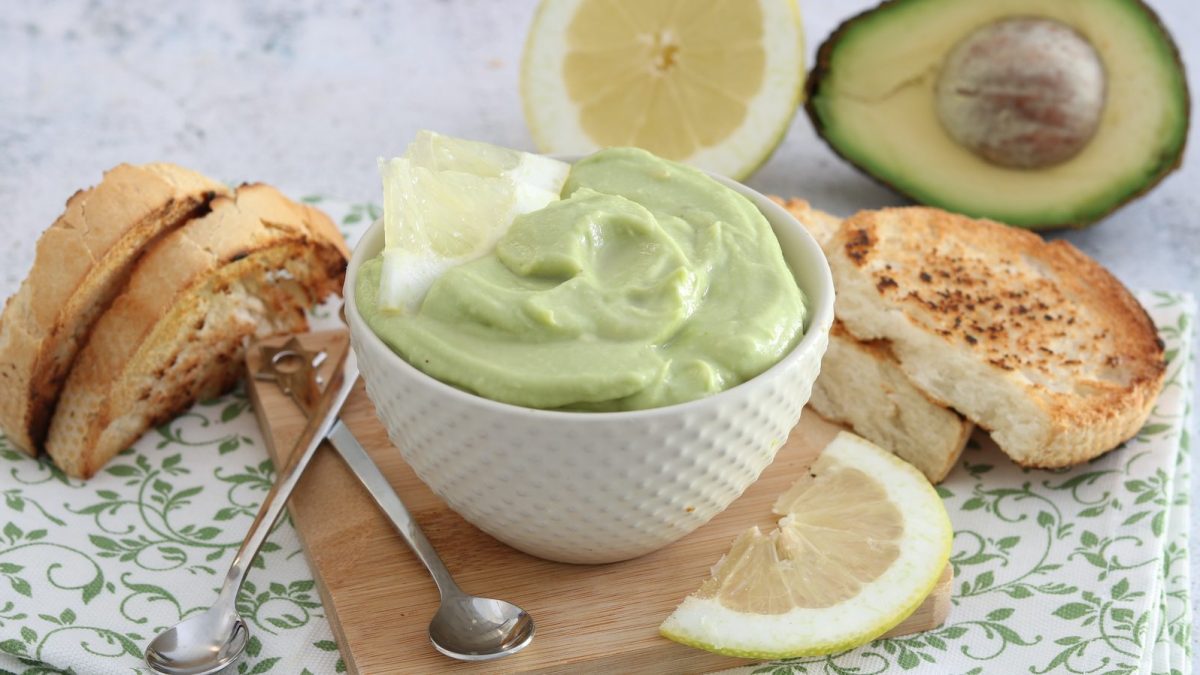
Avocado Cream Sauce is a simple and versatile no-bake sauce, with a velvety consistency and refreshing flavor. Perfect to make at the last minute with avocado, lemon juice, oil, salt and pepper, it is ideal for seasoning pasta, accompanying grilled vegetables, basmati rice and baked salmon, or to spread on piadinas, bruschetta and fragrant croutons and serve as a delicious appetizer.
The preparation is within everyone's reach and will be a guaranteed success even for those who are not very familiar with the kitchen: just cut the avocado in half, remove the internal stone and take out the pulp, then blend it with a kitchen mixer together with the filtered lemon juice, extra virgin olive oil, a pinch of salt and a grind of pepper.
Once ready, you can also use it to enrich a couscous or a salad, for a light spring or summer lunch.
What is Avocado Cream Sauce?
Avocado cream sauce, a velvety blend has deep roots in the culinary landscape of the United States. While avocados themselves trace back to ancient Mesoamerican civilizations, the modern American love affair with avocado-based sauces really took off in the late 20th century. As Mexican cuisine became more mainstream in the U.S.—particularly in California and the Southwest—guacamole reigned supreme, but chefs and home cooks began experimenting with the fruit's creamy texture to create new interpretations. Avocado cream sauce emerged as a lighter, tangier alternative to traditional dips and dressings, perfect for tacos, grilled meats, or veggie bowls. Its rise paralleled the health food movement, with avocados praised for their “good fats,” making this sauce a staple in health-conscious American kitchens and trendy brunch spots coast to coast.
Pro Tips for The Best Avocado Cream Sauce
- Aim for avocados that yield slightly to gentle pressure but aren't mushy. This ensures a creamy texture and rich flavor. If your avocados are underripe, placing them in a paper bag with a banana can speed up the ripening process.
- Using a combination of lemon and lime juice adds a balanced acidity, enhancing the sauce's brightness and helping to preserve its vibrant green color.
- Avocados can handle more salt than you might think. Proper seasoning is crucial to bring out their full flavor potential.
- For the creamiest texture, blend the ingredients in a high-speed blender until smooth. This ensures a uniform consistency, perfect for spreading or drizzling.
What Else Can I Add to This Avocado Cream Sauce?
You can elevate your avocado cream sauce by adding ingredients like garlic or shallots for a punch of flavor, jalapeños or a dash of hot sauce for heat, or fresh herbs like cilantro, dill, or basil for added freshness.
A touch of honey or maple syrup can balance the acidity, while spices like cumin or smoked paprika bring a warm, earthy depth. For a protein boost or richer texture, blend in a spoonful of nut butter or silken tofu.
How Do I Keep It From Turning Brown?
To keep avocado cream sauce from turning brown, add plenty of lemon or lime juice—the citric acid helps slow oxidation. After preparing the sauce, press a piece of plastic wrap directly onto the surface before sealing it in an airtight container. This minimizes air exposure, which is the main cause of browning. Storing it in the coldest part of your fridge and using it within 1–2 days also helps maintain its vibrant green color.
What Can I Use This Avocado Cream Sauce For?
Avocado cream is incredibly versatile—you can use it as a topping for tacos, burritos, and nachos, or as a creamy spread on burgers, sandwiches, and wraps. It works beautifully as a dip for raw veggies, chips, or roasted potatoes, and can double as a healthy alternative to mayonnaise or sour cream in dressings and bowls. You can even drizzle it over grilled meats, seafood, or buddha bowls for an extra punch of flavor and creaminess.
Can I Make it Ahead of Time?
Yes, you can absolutely make avocado cream sauce ahead of time! To keep it fresh, store it in an airtight container and press plastic wrap directly onto the surface to minimize air exposure. The added citrus (like lemon or lime juice) will help prevent browning. For best results, consume it within 24–48 hours. If it darkens slightly on top, just stir before serving—it’ll still taste great!
Does It Freeze Well?
Avocado cream sauce doesn't freeze very well, unfortunately. Freezing can cause the texture to become watery and grainy once thawed, and the fresh flavors may dull.
How to Store Avocado Cream Sauce
To store leftover avocado cream sauce, transfer it to an airtight container and press a layer of plastic wrap directly onto the surface before sealing the lid. This helps minimize air exposure, which can lead to browning.
Keep it refrigerated, ideally in the coldest part of your fridge, and use it within 1–2 days for the best flavor and color. If a slight brown layer forms on top, simply stir it well before serving—it's still safe and tasty!
Ingredients
How to Make Avocado Cream Sauce
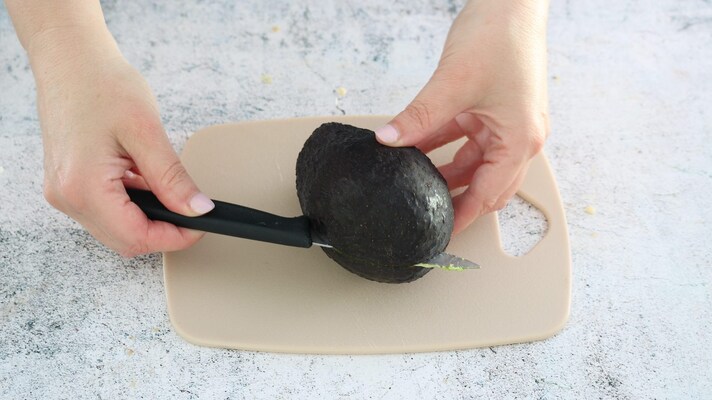
To prepare the cream, split the avocado, cutting it lengthwise with a knife.
To prepare the cream, split the avocado, cutting it lengthwise with a knife.
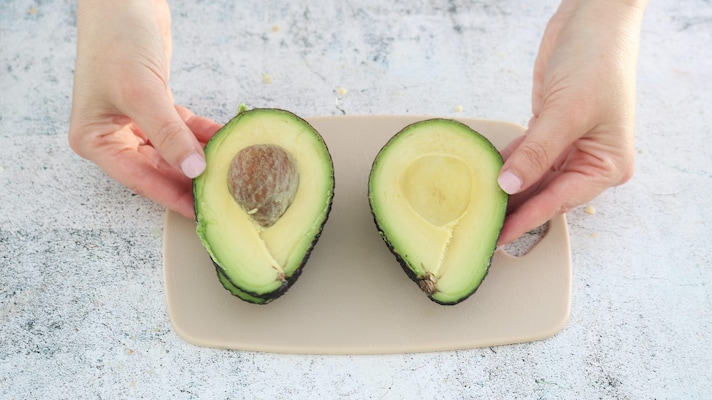
Run the knife along the surface of the central stone, without cutting it, then gently open the avocado in half.
Run the knife along the surface of the central stone, without cutting it, then gently open the avocado in half.
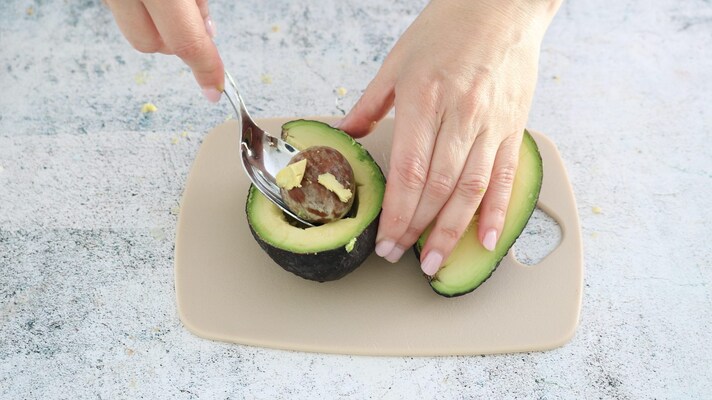
Using a spoon, remove the central stone: you can keep it aside to produce a new seedling.
Using a spoon, remove the central stone: you can keep it aside to produce a new seedling.
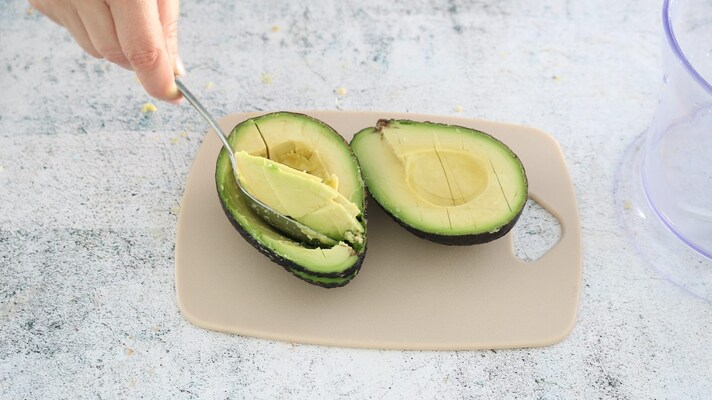
At this point, slightly carve the pulp with the tip of the knife to make it easier to extract, then remove it with a spoon.
At this point, slightly carve the pulp with the tip of the knife to make it easier to extract, then remove it with a spoon.
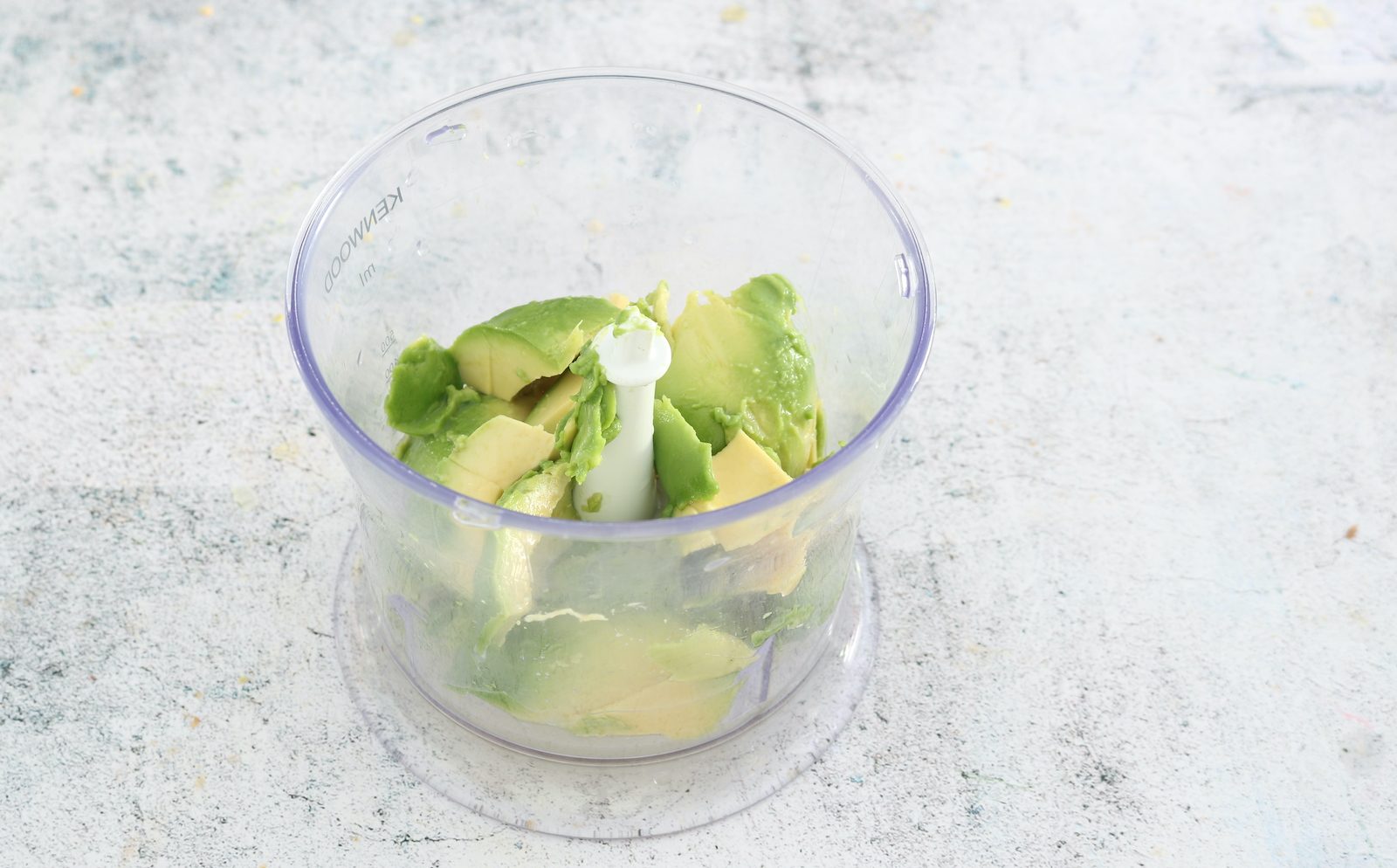;Resize,width=712;)
Transfer the avocado pulp into the bowl of a food processor.
Transfer the avocado pulp into the bowl of a food processor.
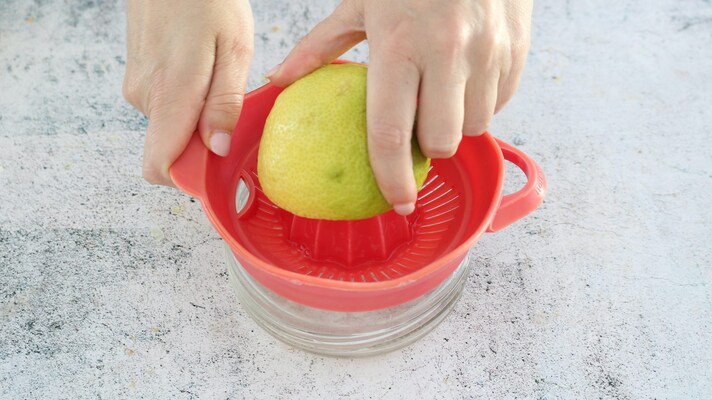
Squeeze the lemon and extract the juice.
Squeeze the lemon and extract the juice.
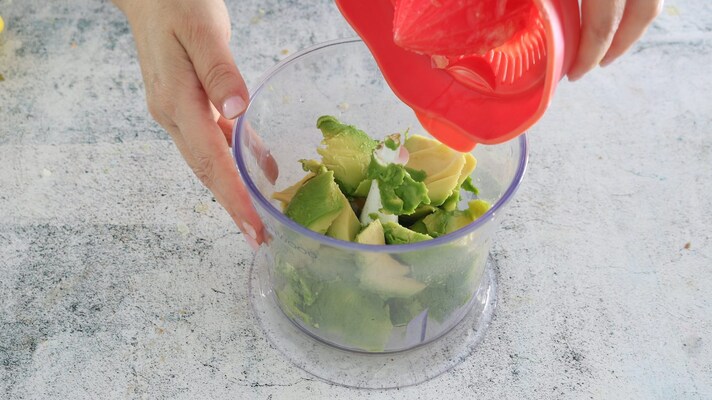
Add the lemon juice to the blender along with the avocado.
Add the lemon juice to the blender along with the avocado.
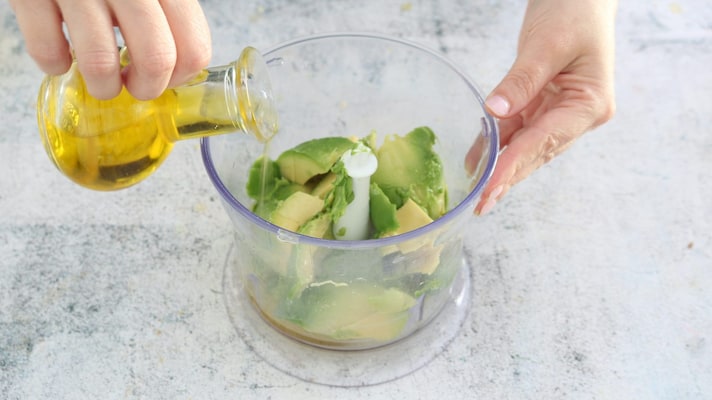
Pour the extra virgin olive oil.
Pour the extra virgin olive oil.
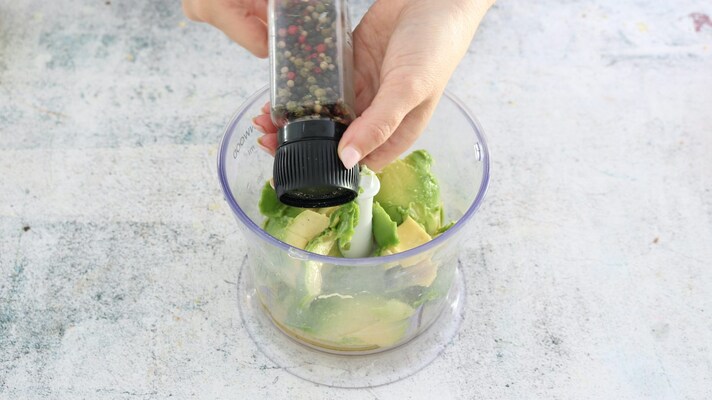
Season with a pinch of salt and some freshly ground mixed pepper.
Season with a pinch of salt and some freshly ground mixed pepper.
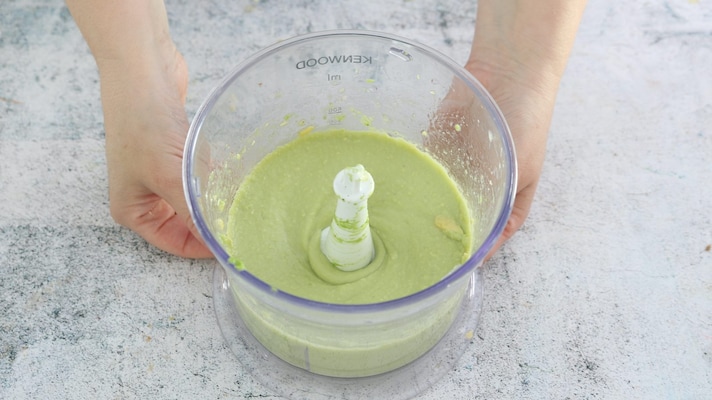
Blend for about twenty seconds, until you obtain a smooth and thick cream.
Blend for about twenty seconds, until you obtain a smooth and thick cream.
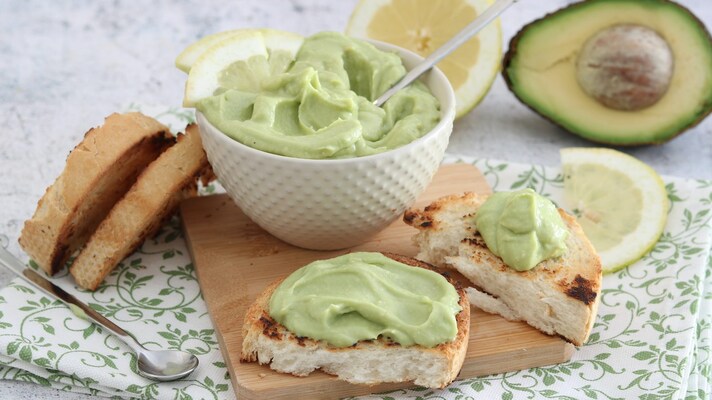
Transfer the avocado cream to a small bowl and garnish with lemon slices.
Transfer the avocado cream to a small bowl and garnish with lemon slices.
Enjoy!
;Resize,width=767;)
